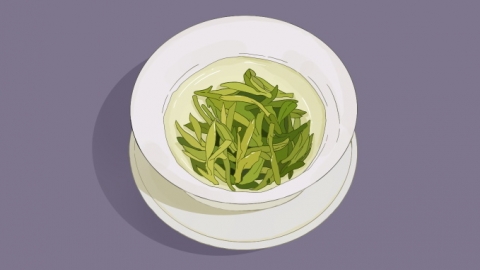What kind of tea needs to be boiled before drinking?
Generally speaking, teas such as dark tea, white tea, ripe pu'erh tea, black tea, and Tibetan tea (Zang tea) are suitable for brewing by boiling. Detailed explanations are as follows:
1. Dark Tea
Dark tea is a type of tea that undergoes fermentation and post-fermentation processes, offering a unique aged aroma and a mellow taste. When brewing dark tea, boiling water is typically used. Place the tea leaves into a teapot or kettle and gently simmer them over medium to low heat for several minutes, allowing the tea infusion to fully absorb the aroma and flavor of the tea. Boiled dark tea not only tastes better but also helps promote digestion and weight loss.

2. White Tea
White tea is a lightly fermented tea with a fresh aroma and delicate flavor. When brewing white tea, aged white tea is typically preferred. Use boiling water and place the tea leaves into a teapot or kettle, then gently simmer over low heat to produce a richer and smoother infusion. Brewing white tea in this way helps refresh the mind and combat oxidative stress.
3. Ripe Pu'erh Tea
Ripe pu'erh tea undergoes an artificial fermentation process, giving it a unique aged aroma and smooth taste. Boiling ripe pu'erh tea better releases its aged fragrance and tea characteristics, resulting in a more concentrated and mellow infusion. In addition to enhancing flavor, drinking boiled ripe pu'erh tea can help reduce body fat, support weight loss, and regulate gastrointestinal function.
4. Black Tea
Black tea typically has a rich aroma and robust flavor. Boiling black tea helps better release its aroma and taste. When brewing black tea, use boiling water, place the tea leaves into a teapot or kettle, and gently simmer over medium to low heat for several minutes to allow the tea infusion to fully blend with the tea's aroma and flavor. Drinking boiled black tea not only enhances flavor but also helps refresh the mind and combat oxidative stress.
5. Tibetan Tea (Zang Cha)
Tibetan tea has a rich aroma and a unique flavor profile. Boiling Tibetan tea better releases its aroma and nutritional components. Typically, a copper or clay teapot is used for brewing. Place the tea leaves into the pot, add an appropriate amount of water, and gently simmer over medium to low heat. The resulting infusion is bright red in color, fragrant, and has a mellow taste.
When brewing tea by boiling, it is important to control the heat and brewing time to avoid damaging the tea's flavor and nutritional content. Additionally, individuals should choose tea types and brewing methods according to their personal taste and preferences.







